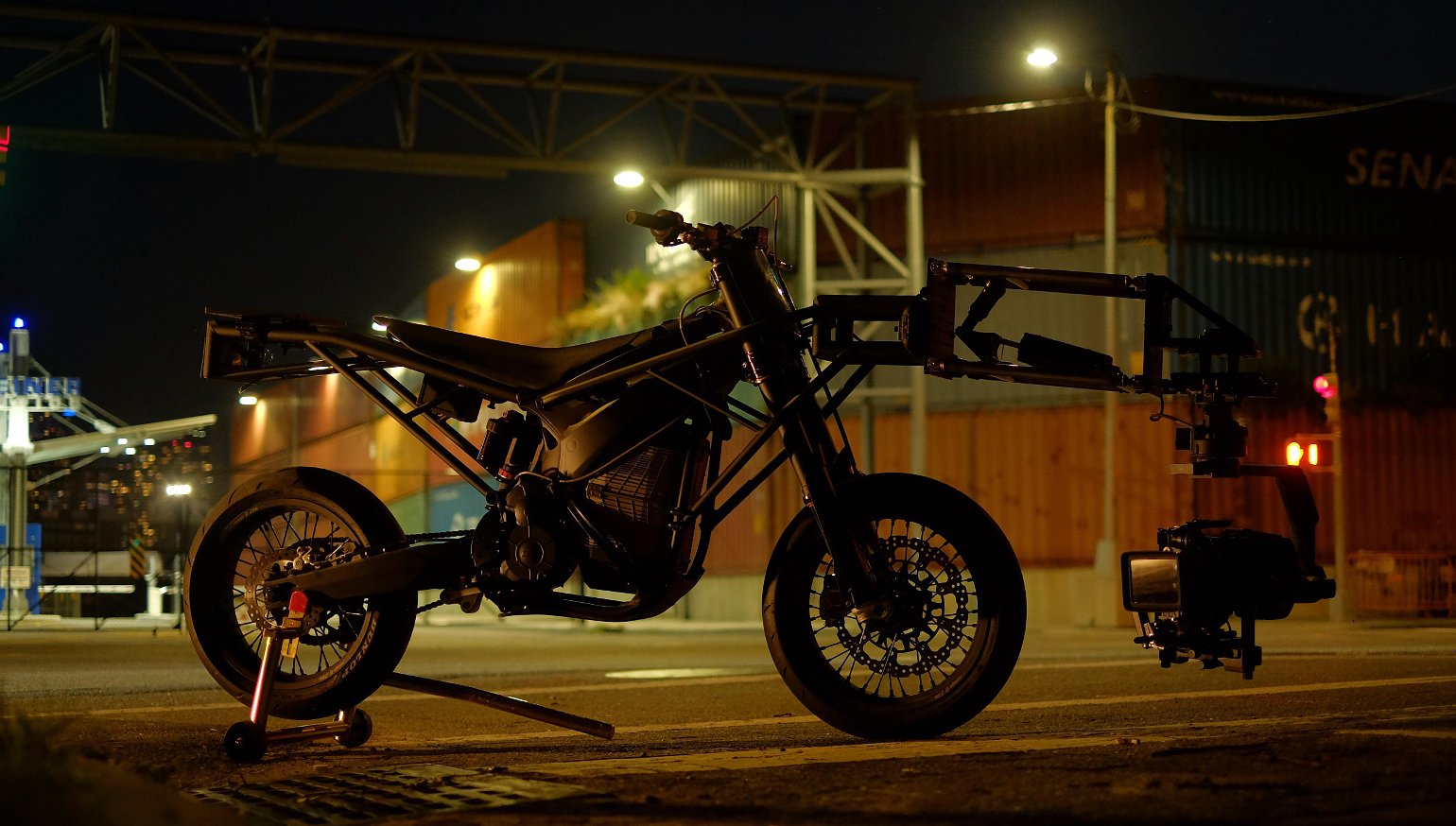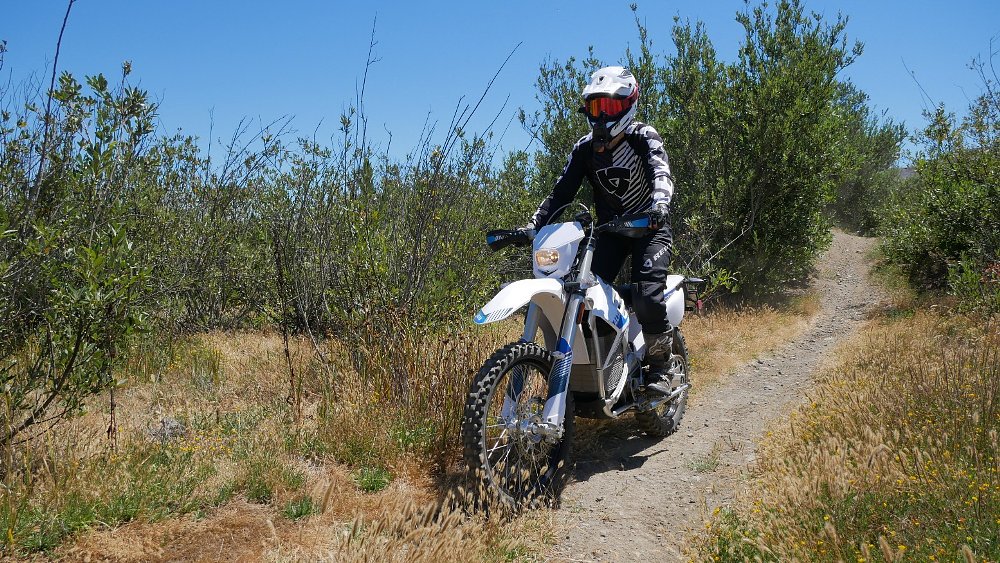A few weeks ago, a friend of mine connected me with a team of filmmakers in Brooklyn, N.Y., who had just completed a short film called “Chasing Silence.” It aims to capture the calm and quiet sensation inside a rider’s head even while the surrounding environment is frenetic and violent. About 60 seconds in, all I could think was “How the hell did they get that shot?”
I don’t have a lot of experience riding flat track, but for me the film captures a lot of what makes racing a motorcycle special. The little moments of fury or balance amid the turmoil of competition have often been what stick with me. Being alone, using only your own thoughts, skills, memories, and theories to control the machine at the limit of traction or your own psyche creates a unique sense of focus. And it bonds you to the person nearby, who is entering the same corner at the same velocity, struggling with the same fears, gripped by the same force that keeps asking for an equilibrium of control and speed. It makes for a camaraderie that can only be known by those who have the same respect for the physics of danger. In my opinion.
You can decide whether or not it resonates with your experiences on two wheels, but hopefully we can agree that some of the individual shots in the film are engrossing. Especially the ones tracking along with riders at close proximity — e.g. at 35 and 59 seconds into the video — felt visceral and real in a way that’s difficult to capture with sideways motorcycles. As it happens, two of the team members who created the film were also responsible for the bike used for shooting, an extracurricular gig that has turned into a passion project.
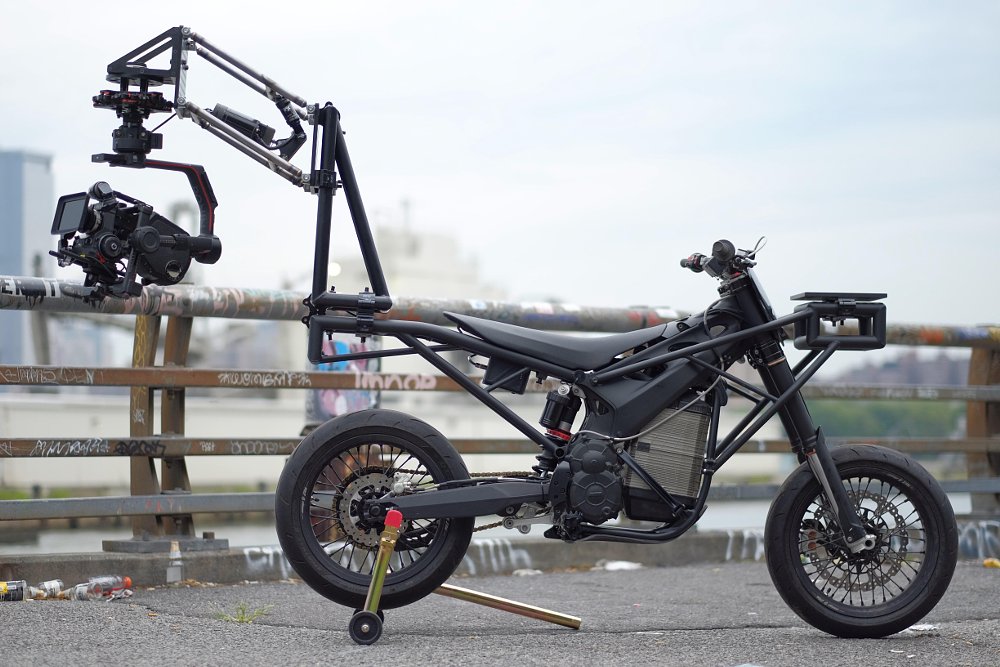
The Agile bike is the brainchild of Gareth Jackson and Leo Schott, young film-industry veterans and motorcycle enthusiasts based in Brooklyn. They grew weary of complaining to each other that they didn’t have the right system on hand, so they set out to build it themselves. At its core the bike is an Alta Redshift EXR, stripped of its bodywork, then customized to carry and control a state-of-the-art camera. Jackson and Schott chose the EXR for its size and power characteristics — the fact that Alta ceased production and disappeared within weeks of the initial purchase was pure bad luck. They have since sourced a backup machine, which is used for buzzing around the boroughs and as a donor for replacement parts.
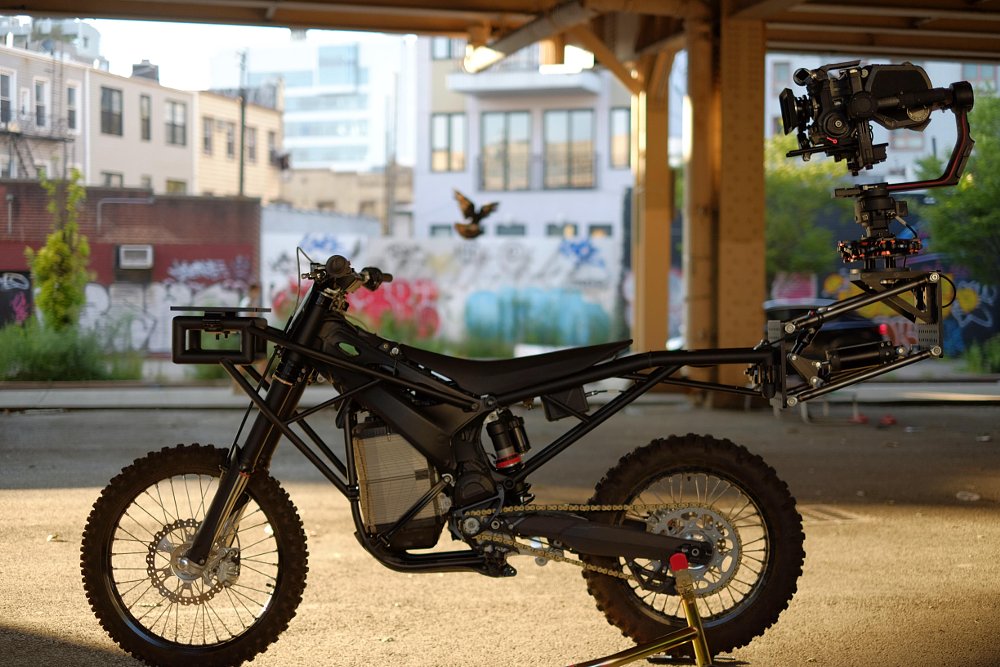
An electric camera bike isn’t a new idea, of course; other systems have been assembled in the past, but they felt there was room for improvement. Technological advancements come thick and fast these days, so when they considered the latest tech in cameras and how impressive electric motorcycles had become, it was an obvious fit.
“We knew these two things together would be the perfect tool,” said Jackson. “Then we thought, ‘Wait a minute, let’s just build that.’” The DIY attitude persevered through the build, based on a mix of ambition and sensibility. “We kind of put the pressure on ourselves to learn everything that we could,” said Schott. “If we only knew a little bit about something and it took a lot of knowledge and practice we would pretty much just force ourselves to do it. So we would know how to fix it.”
The details of the camera bike
Apart from all of the stuff that’s been pulled off the Alta, the most noticeable pieces are probably the custom chromoly structures holding the mounting platforms. A replacement subframe for the rear tidily supports the seat as well as the rig, while the front structure cantilevers from mounts at the back of the main frame spars and the down tubes of the double cradle. Built with identical mounts, the rig can be moved from bow to stern in about five minutes. The arm can hold a variety of hardware; a DJI Ronin II gimbal and an ARRI ALEXA Mini were used to shoot “Chasing Silence.”
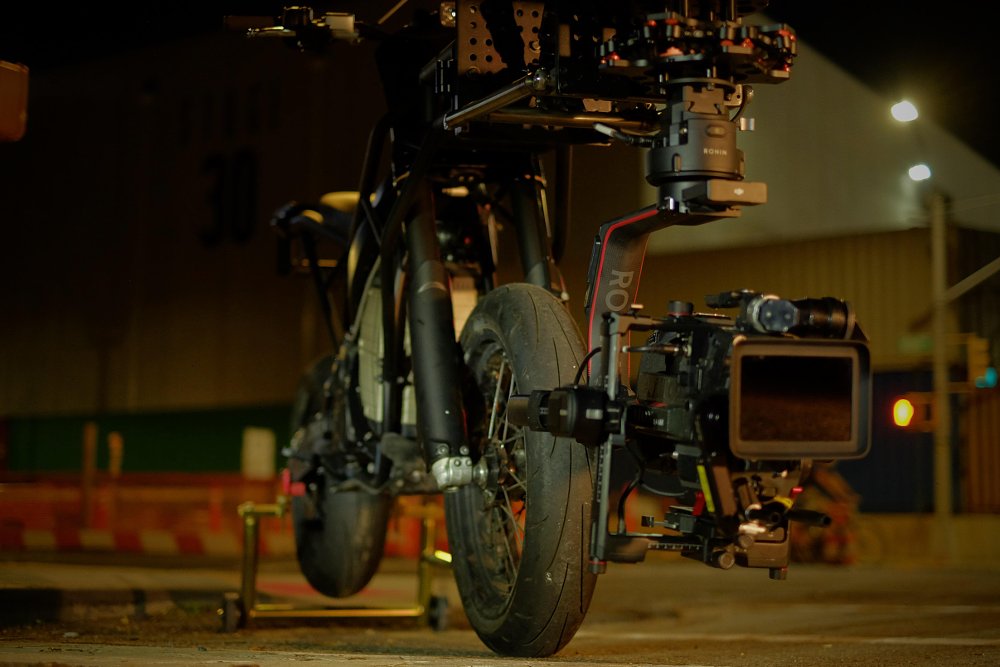
As with many custom bikes, there are lots of details that don’t stand out right away. Because there’s no clutch lever on an Alta, they were able to put a lever on the left side of the handlebar to operate the rear brake, mimicking the controls of a scooter. The control arm, head, and camera weigh about 50 pounds all told, and are sometimes swinging out from the bike at an awkward angle. The hand brake leaves legs and feet available to focus on balance and outrigging at low speed, without affecting use of the rear brake.
The suspension was made stiffer to hold the extra weight, too, with stiffer springs in the fork and a beefier coil for the shock. Leaving the valving stock makes the action of the suspension a little loose; bad for some performance situations but better for supporting the camera and keeping it tracking smoothly. That doesn’t solve the fact that it’s a light bike (a stock Alta was about 275 pounds) with weight hanging off the front or back. Throttle and brake control are crucial, so the team often utilizes the Alta’s adjustable throttle maps when shooting to mitigate thrust. Depending on what surface the Agile bike is shooting on, the wheels can be swapped between the off-road hoops carrying knobby rubber that came on the EXR, and a 17-inch supermoto setup with street tires.
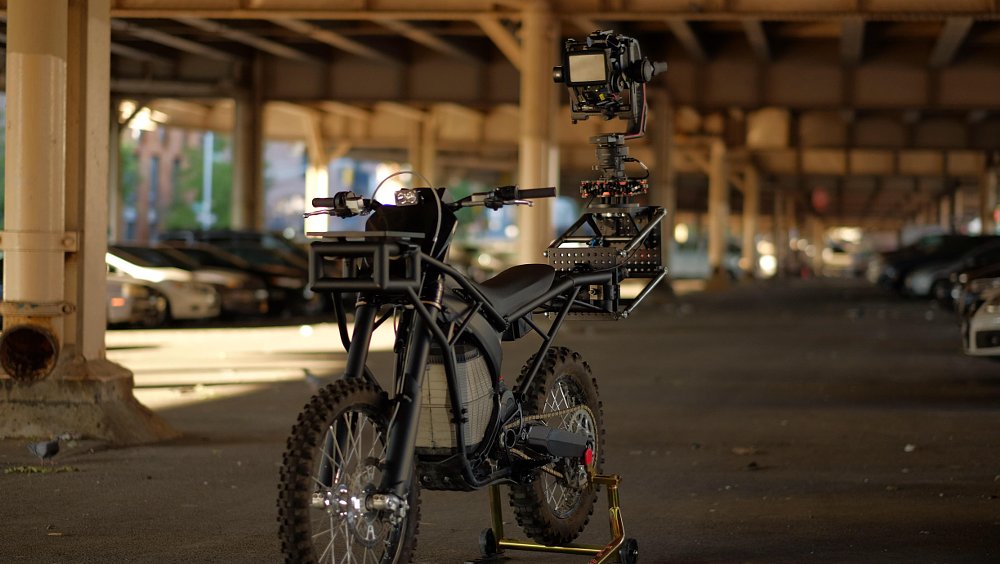
Communication is another hurdle that Jackson and Schott had to clear, since the rider doesn’t control the camera. A cam-op is in charge of pointing the lens in the right direction and therefore needs to be in touch with the bike’s pilot, which they achieved with some nifty reverse engineering of standard headsets. The Agile’s matching helmet (matte black, obviously) uses tandem Cardo PackTalk units that have been wired to one set of speakers and microphone, with Bluetooth communication to two-way radios. That means the camera operator can talk to the rider from up to a mile away, separate from the film-crew frequency, which the rider can also hear.
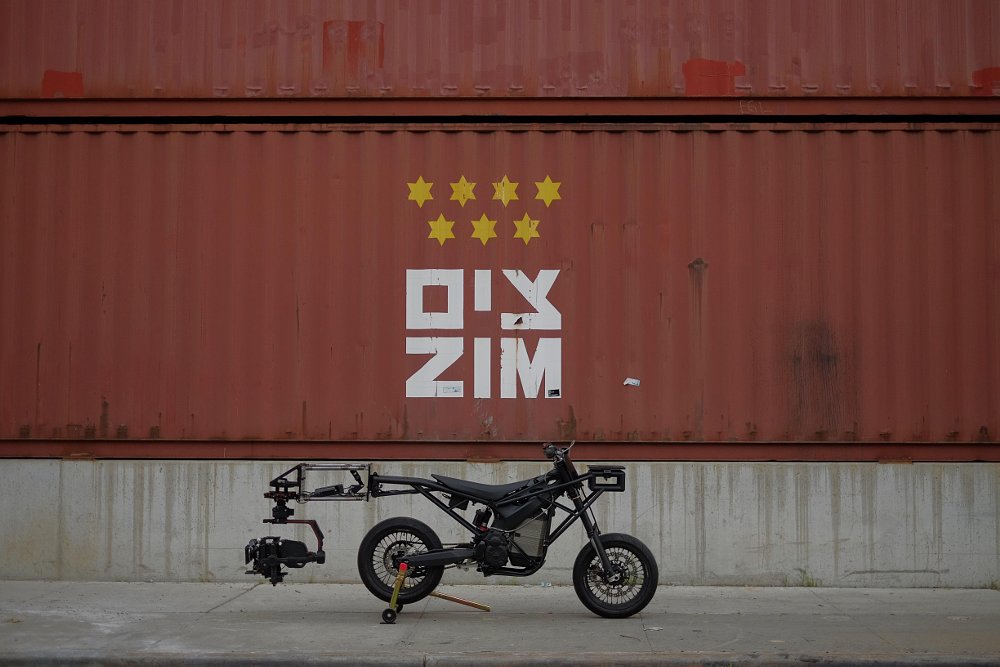
The Agile bike still has all of the lights and signals necessary for it to be street legal, with some James Bond updates. The headlight and taillight can be shut off manually with switches on the handlebar, so that the bike can film in the dark without disturbing the image. As soon as the director cuts the shot, any lights that were off can be flicked on. Power for the gimbal and camera is provided by DJI TB50 batteries that have been wired into a cradle on the bike — dual packs connected to the same system allows one battery each to be swapped without losing power to the system.
A working custom
Schott and Jackson have become shade-tree motorcycle engineers, having to practically rebuild the entire wiring harness for the bike, not to mention TIG weld chassis parts and figure out redundancies for nearly every system. All with a bike made by a company that doesn’t exist anymore. It could be that they are the preeminent Alta mechanics in the country at this point, all because they thought it would be cool to be able to capture images of a person running down a sidewalk at full speed or a bicyclist riding through a narrow alley.
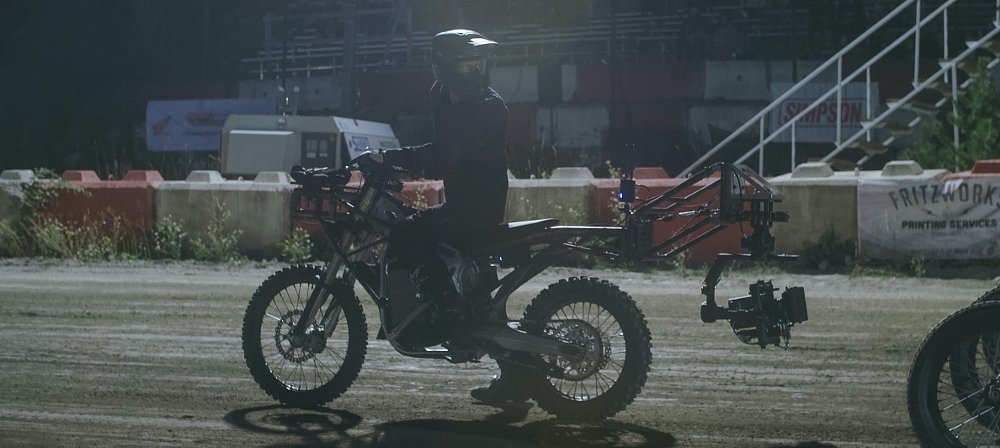
All of the work they have put in is in the interest of having the filming go smoothly while on location. The little details and tidbits that might seem unnecessary are what make it a valuable tool in the field.
“The film industry gets a lot of specialized toys,” said Jackson, “and when one of those comes out to work and it’s not dialed in it’s like, ‘What’s wrong with you guys? This is your whole thing, and you don’t know what to do with your headlights?’ So we figured we need to make all of this stuff not just doable, but easy. Yeah, of course we can turn the headlight off, there’s a button right here.”
Essentially, the rider needs to be in a clear headspace and able to focus. Not unlike bailing into a corner on a flat track, honed in on the task at hand and nothing else.




